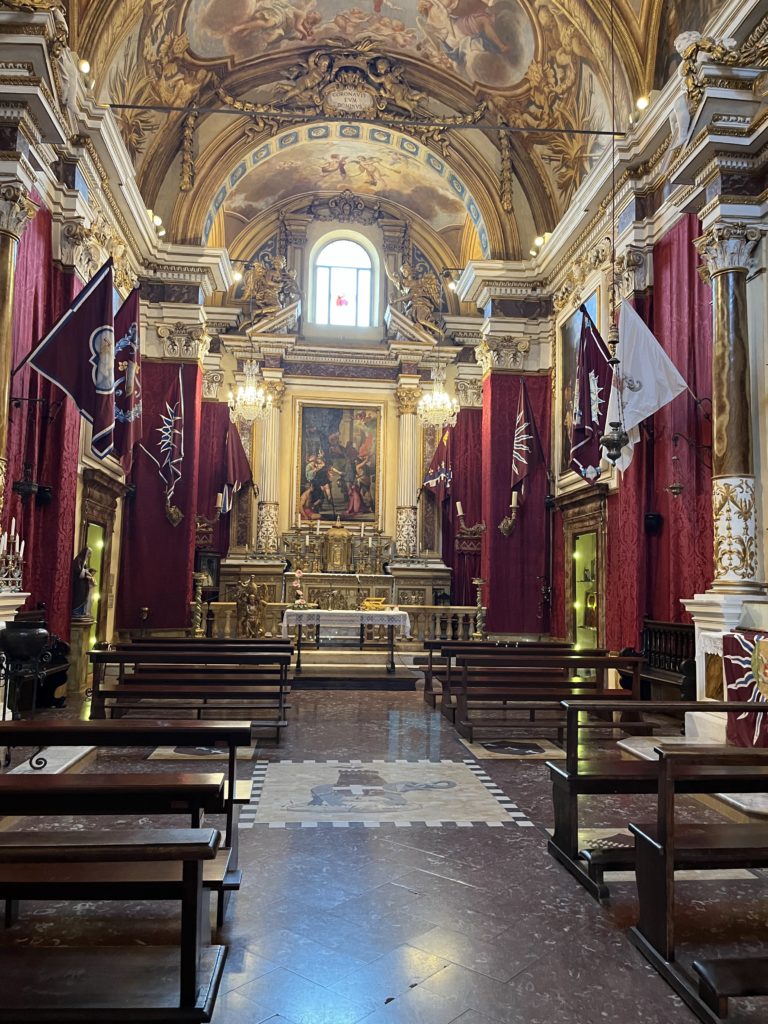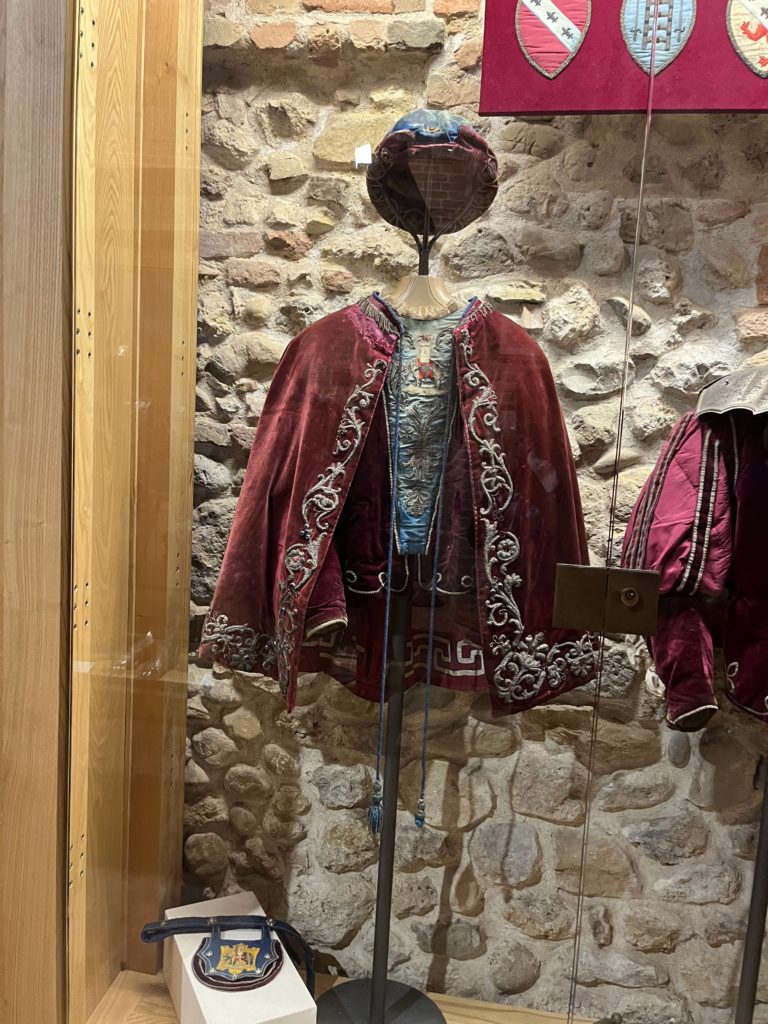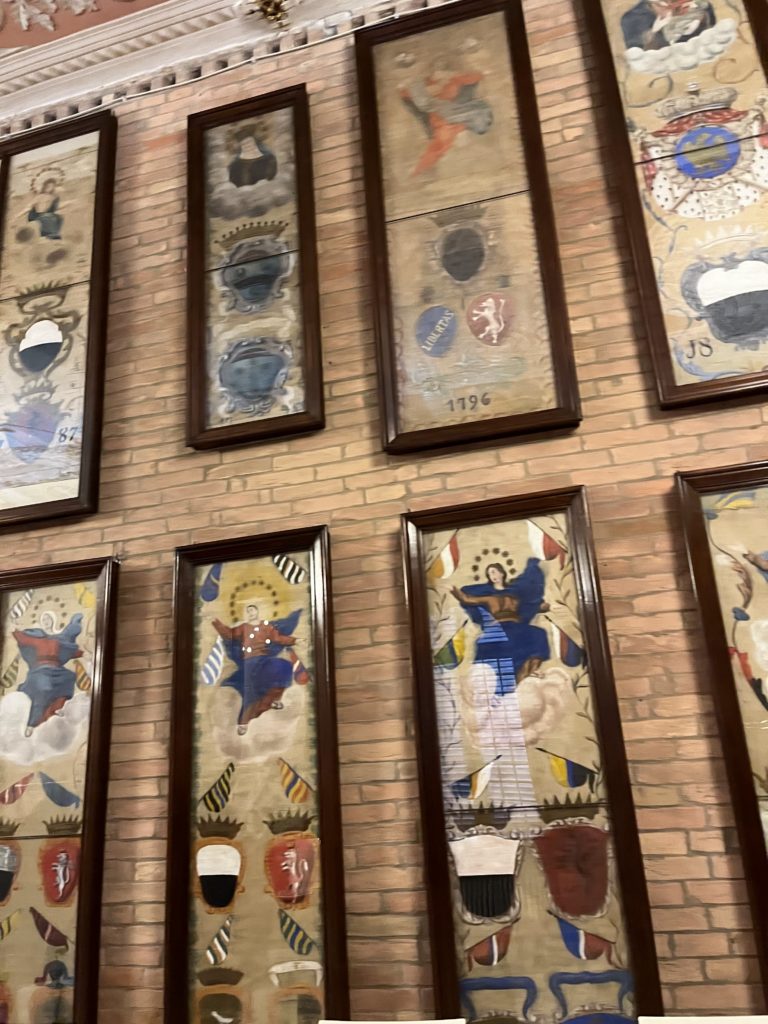Before I arrived in Siena, Italy, I did some research on the city and found out a little bit about the way the city works and one of their most beloved traditions. I learned that Siena is divided up into 17 different contrade, or districts, and that twice a year 10 of the 17 contrade race a representative horse in the Palio. At first, I did not think of the Palio as anything more than just a common horse race, but during the course of my five week immersion into the contrade culture I learned that this tradition is the very essence of community in Siena.
Each of the 17 contrade in Siena is represented by a symbol and usually an animal as well. The 17 different contrade are Aquila (eagle), Bruco (caterpillar), Chiocciola (snail), Civetta (little owl), Drago (dragon), Giraffa (giraffe), Istrice (crested porcupine), Leocorno (unicorn), Lupa (she-wolf), Nicchio (seashell), Oca (goose), Onda (wave-dolphin), Pantera (panther), Selva (forest-rhinoceros), Tartuca (tortoise), Torre (tower-elephant), and Valdimontone (valley of the ram). Each contrada has its own community traditions and hosts traditional festivities for its members throughout the year, especially during Palio season. Preparation and excitement for the Palio is something that occurs all year long, and the rivalries between contrade are also ever-present. In the weeks leading up to the Palio, the city was alive with excitement of the upcoming race; the first since before the hit of the pandemic.
It was amazing to experience this part of the year as someone in the process of learning about the culture in Siena. I was attending the Dante Alighieri School, and all the faculty and staff were excited to share their knowledge about the Palio. In my culture class, my professor – a member of the Torre contrada – took us on a tour of the important buildings of his contrada. As a class, we were able to learn from someone who not only knows the history of the contrade in Siena but who is an active member of his contrada. Professor Luca Bonomi gave us the privilege of seeing historic clothing, banners, and items that Torre treasures.



As a visitor to Siena, I was lucky enough to experience a little bit of multiple contrade and feel like I had a connection to them in individual ways. First Torre, which is home to a marvelous aforementioned professor at the school. Next Tartuca, the contrada in which our school, where I grew to love both the staff and students, can be found. My apartment, where I was able to get to know my three brilliant roommates, resides in the Lupa contrada. Lastly, on the day before the Palio, the students of my class were granted seats in the traditional Gala Dinner hosted by the Istrice contrada, and we were guided by yet another wonderful professor of our school through the contrada he calls home.
Palio day was full of festivities and parades that all led up to the race. For hours the city and its residents held their breath in anticipation of the two-minute horse-run, waiting to see who would be the first winner in three years. My friends and I watched the race in similar anticipation, but what we felt could not compare to the intense emotions of the native residents of Siena. The race began after a frustrating delay, and upon its start we heard shouting as each contrada cheered on its horse and cursed at its rival. Suddenly the race was over, and the night was filled with tears of joy and sadness. This year’s first winning contrada was Drago; their celebratory festivities lasted all week, and we were able to experience the exhilaration of a Palio win that to Siena signifies the rebirth of the winning contrada. I feel so incredibly lucky to have experienced a taste of life in Siena during the Palio season, and I plan on keeping up with the turn-out of future Palii.


